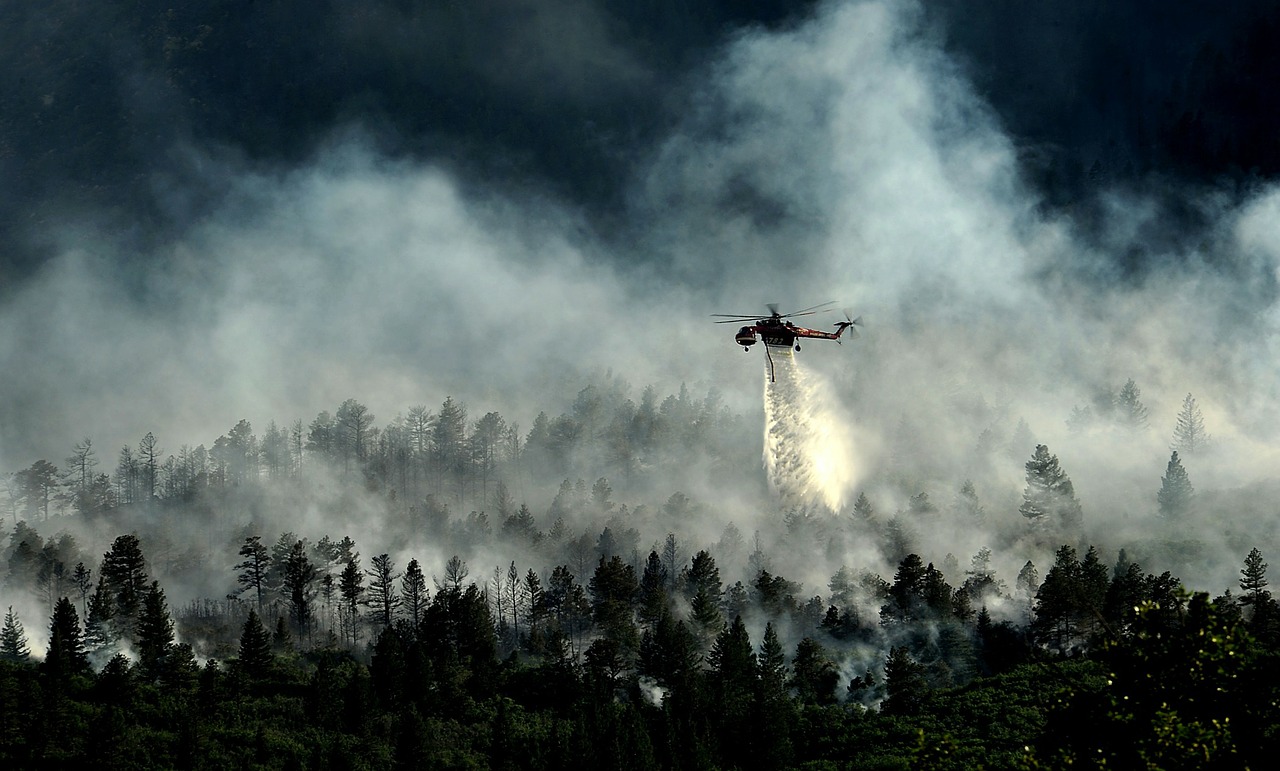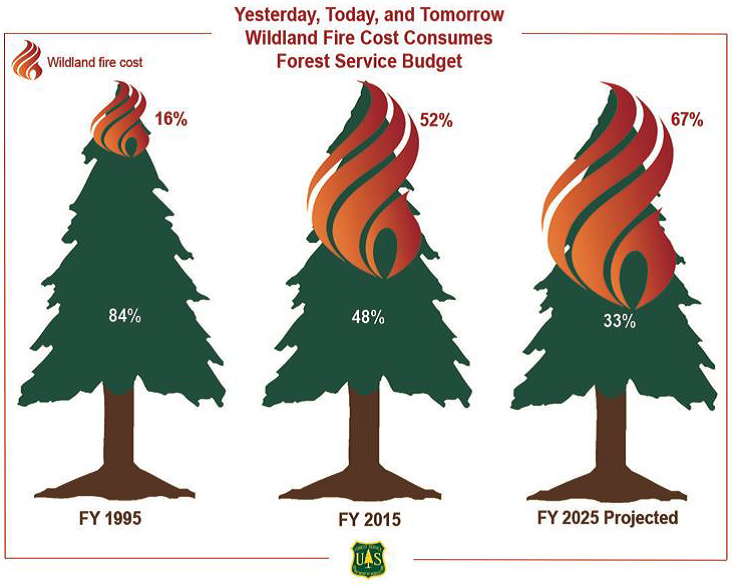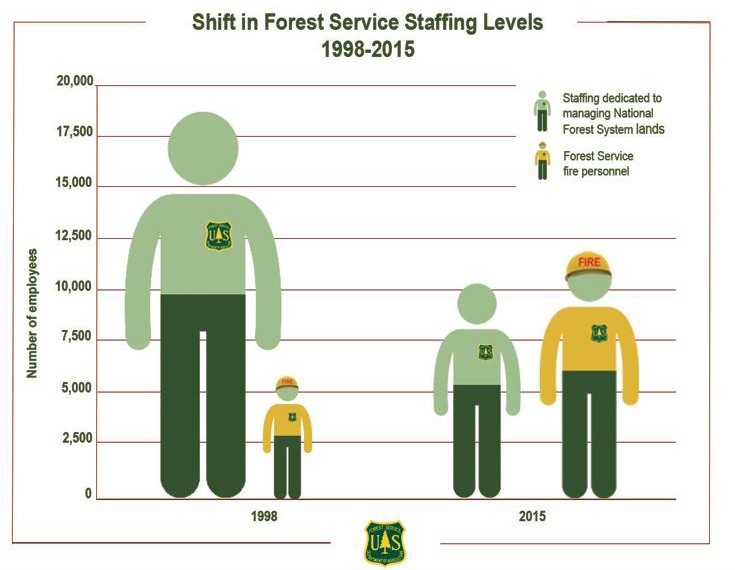By David May, Communications Intern
A report released by the U.S. Forest Service (USFS) earlier this month has revealed a stunning increase in wildfire suppression costs. This past year, more than half of the organization’s budget went to fire suppression, a first in USFS history and a stark comparison to the 16 percent of the budget allocated to wildfire suppression in 1995. This exponential growth shows no sign of stopping anytime soon, with 67 percent of the budget estimated to go to wildfire suppression by 2025 if left unchecked.
What’s Causing the Dramatic Increase?

First and foremost, more development is taking place than ever before in fire-prone areas, which means that the USFS must prioritize their limited resources to protect lives and property.
Due to the changing climate, the average wildfire season is now 78 days longer than in 1970, increasing it to almost 300 days in some areas. These days, the U.S. is burning twice as many acres as it did three decades ago.
So, is the USFS just doing a bad job at putting out fires?
No! In fact, even as the wildfires have continued to grow, the USFS, and related firefighting agencies, manage to suppress 98% of all wildfires. However, it’s this 1 to 2 percent of the most extreme wildfires that end up devouring at least 30% of the firefighting budget.
Drought, variations in temperature and a buildup of fire-prone vegetation have combined to create some truly immense fires that are burning hotter and longer than ever before.
What Is This Doing to the U.S. Forest Service?
Congress determines the USFS’ wildland fire suppression budget based off of a rolling average of the costs of fire suppression for the past 10 years. This worked well when the averages were relatively stable, but, as we’ve already seen, the averages are rising more and more each year.

This exponential rise in costs has led to less than accurate budgeting, and non-fire related USFS programs are paying the price. In a practice known as fire transfers, the difference in the appropriated budget and actual cost for the fire suppression budget comes from other programs’ budgets. Over the past fiscal year, the fire suppression costs ate up $115 million from other programs’ appropriated budgets, including those that help prevent extreme wildfires like hazardous fuel reduction.
This is a big deal.
Vegetation and Watershed Management programs are crucial for post-fire restoration; these programs are our best preventative measure against the growing threat of wildfires, yet their budget has been cut by 24 percent over the last 15 years. Not only do they help to prevent wildfires, but they ensure that the ecosystems we rely on for water and a variety of products are healthy, a service that is all too easy to take for granted.
Infrastructure is taking a back seat, too. The budget for the road system was cut by 46 percent, facilities lost 68 percent and deferred maintenance projects were reduced by a whopping 95 percent. The effects of these reductions cannot be understated. These are the means with which all forest service operations are conducted; the bridges and roads that are falling into disrepair are the same ones that fire suppression teams rely on to respond to wildfires. Not only that, but outdoor recreation is feeling the cuts as well. The $646 billion industry cannot exist without the services provided by the USFS.
Rebecca Turner, American Forests’ chief strategy officer, says the funding issue’s impact on multiple agencies increases its need to be addressed.
“As federal budgets are staying level and even decreasing, the fire suppression funding issue doesn’t just affect the U.S. Forest Service,” Turner says. “Department of Interior agencies, including the Fish and Wildlife Service and the National Park Service, are impacted as well. It is time Congress fixes this problem.”
What Needs to Be Done

We need Congress to act, and we need them to act fast. The current funding structure for the USFS is insufficient, and every year the lasting effects of this problem become harder to undo.
Right now, our best hope is the Wildfire Disaster Funding Act (WDFA) (S.235 and H.R. 167.) Introduced into the House of Representatives and the U.S. Senate, the WDFA would make it so that 70 percent of the 10-year rolling average mentioned before would be allocated to the fire suppression budget, and the remaining cost would come from federal disaster funding. This would treat the most extreme wildfires as natural disasters and fund the response to them the same way hurricanes, tornadoes and floors are funded.
With WDFA, the USFS can get back to providing the services that we need and ensure that the growing wildfire problem can be dealt with adequately.
So far, there is growing bipartisan support along with the president’s approval. But, we can always use your help! Go to our action center and tell your representative that you care about our forests. Because when the USFS suffers, we all suffer.